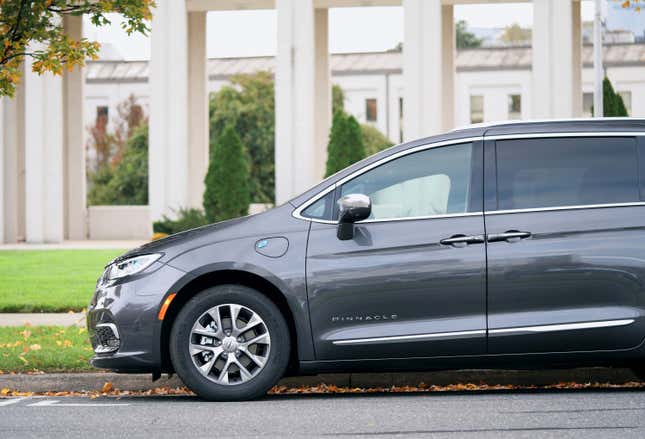Stellantis Blames California For Lack Of Internal Combustion Vehicle Stock In Some States

Stellantis has only kept dealer lots stocked with electrified versions of its vehicles when possible in the 14 CARB-compliant states since June of this year because of legislative inequality. The world’s third-largest automaker by revenue has formally lodged a petition against the California Air Resources Board to combat this inequality.
California, Connecticut, Delaware, Maine, Maryland, Massachusetts, New Jersey, New Mexico, New York, Oregon, Pennsylvania, Rhode Island, Vermont, and Washington are all CARB-compliant states, so Stellantis is only stocking dealer lots with electrified versions of every model that offers electrification in these states. If a customer wants a purely internal combustion version of a model that offers an electrified variant, they must special order it. This is because the company was barred from being included in the CARB framework agreement in 2020 that would have allowed it to measure emissions compliance nationwide instead of only measuring emissions compliance in CARB states. The Drive reports,
You may ask why Stellantis didn’t just join ‘em, if they couldn’t beat ‘em. It tried. According to the company’s petition, it applied for the framework group in 2021 but was “barred” from entry. And, the way Stellantis sees it, this was a form of punishment because it publicly questioned California’s authority to set its own regulations back in 2019 when the Trump administration was vying to undermine CARB. Stellantis, then just Fiat Chrysler, wasn’t alone at the time; General Motors and Toyota were on the same side of the fight. On the other was BMW, Ford, Honda, and Volkswagen, if it’s any surprise.
Regardless of the cause, Stellantis’ position today is that CARB’s selective rules violate the California Administrative Procedure Act (APA) by creating an alternate, favorable criteria for certain players, and that the board also violated the company’s First Amendment rights by rejecting Stellantis due to arguments made against California regulators in the past. “If CARB had gone through the APA procedures, it would have had to publicly explain and justify the classification of OEMs into a two-tiered regulatory structure, and the regulated community would have had the opportunity to comment on the issues it would create,” the petition reads.
Stellantis was forced to prioritize allocation of its electrified vehicles to CARB states, which has caused the opposite effect in non-CARB states. In non-CARB states, dealer lots are virtually devoid of any stock of electrified models, forcing consumers to special order any electrified Stellantis models.
While it is tough for me to sympathize with a company as large as Stellantis, it does seem unfair to allow some automakers to measure their emissions on a national scale and others are forced to measure them on a state-by-state basis.
It’s not surprising that Stellantis and GM would’ve opposed CARB back when it seemed there was an outside chance they wouldn’t be forced to play by its rules, which are more stringent than the EPA’s national criteria. Both SUV- and truck-centric automakers reportedly paid the government record fines for exceeding Corporate Average Fuel Economy limits in the final years of the previous decade, according to Reuters.
Every company should be subject to the same rules to keep things equitable, and to prevent access challenges to those who are looking to purchase a PHEV or EV off the lot regardless of their state of residence.





